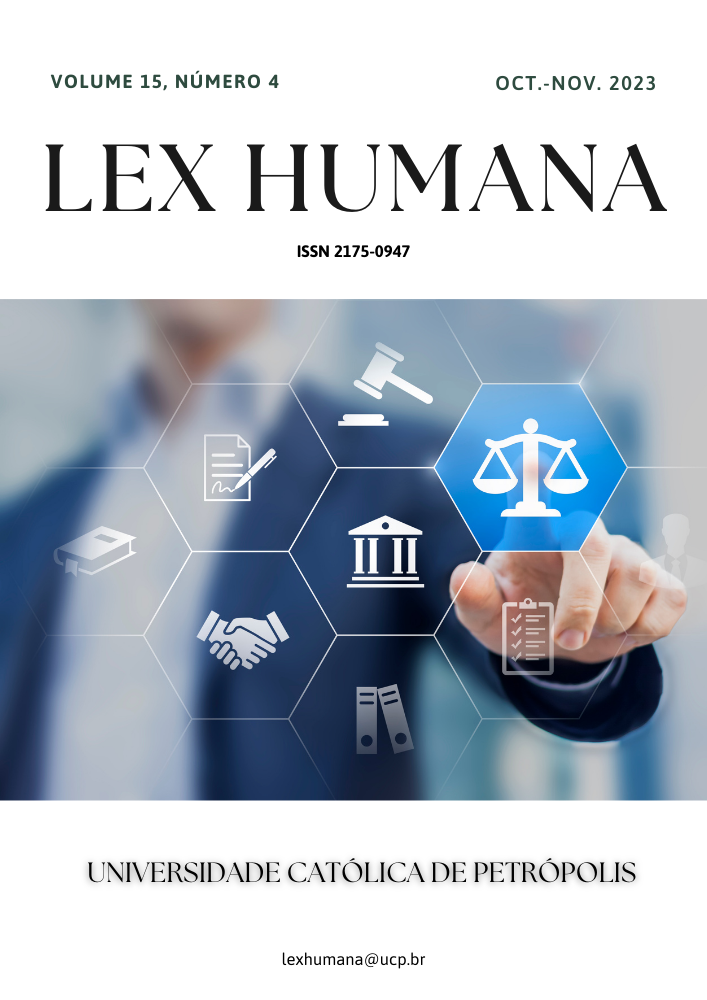Resumo
Este artigo se concentra em examinar a formação de regimes políticos autoritários e democráticos ao longo dos últimos séculos e seu consequente impacto nos cenários políticos contemporâneos. O estudo enfatiza os aspectos políticos e jurídicos inerentes a cada tipo de regime, ao mesmo tempo em que analisa os atributos positivos e negativos a eles associados. Além disso, este artigo apresenta exemplos de países contemporâneos que representam regimes políticos autoritários ou democráticos, juntamente com uma exploração dos fundamentos históricos e fatores influentes que contribuíram para sua formação variada. Além disso, este artigo inclui reflexões sobre o desenvolvimento da democracia no século XXI, considerando os desafios que surgiram nesta época. Além disso, este artigo explora os potenciais desafios e questões ligadas à digitalização, particularmente o risco de ser explorada por líderes autocráticos, transformando-a em uma ferramenta para reforçar regimes autoritários. A pesquisa revela que certas características intrínsecas a um regime democrático podem ser subvertidas e utilizadas de forma enganosa para criar uma ilusão de valorização da opinião dos cidadãos. Essa manipulação do sentimento público geralmente ocorre em países governados por regimes autoritários. Além disso, este estudo examina características específicas e fundamentos subjacentes aos regimes políticos mencionados, lançando luz sobre os mecanismos pelos quais o poder é sustentado dentro de cada sistema.
Referências
Aiyar, S. (2000). The problem of law’s authority: John Finnis and Joseph Raz on legal obligation. Law and Philosophy 19(4): 475.
Andriychuk T. (2012). Development of democracy in Ukraine: influence of political values, Scientific Notes. No. 4. P. 266.
Arblaster E. (2005). Key ideas of democracy. Democracy: anthology/comp. O. Protsenko. K., XXVIII. P.432.
Ball T., Degger R. (2005). Demokraticheskiy ideal: istoriya stanovleniya [democratic ideal: history of formation]. from the English of P. Tarashchuk. Democracy: an anthology/comp. O. Protsenko. -K., XXVIII.. P.775.
Beetham D. Liberal Democracy and the Limits of Democratization. D. Held. Prospects for Democracy: North, South, East, West. Stanford, 1993.
Brownlee J. (2007). Authoritarianism in an Age of Democratization. New York: Cambridge Univ. Press
Bunce VJ, Wolchik SL. 2010. Electoral change and stability in competitive authoritarian regimes. World Polit. 62(1):43–86
Calleo, D. P. (2001). RethinkingEurope’s Future. Princeton, NJ: Princeton University Press.
Chabanka M. (2002). Authoritarianism and totalitarianism. Imaginary similarity and essential difference. Political Management. No. 2, p. 87.
Danyliuk N. (2009). Defining features of the authoritarian political regime: the role of "authoritarian followers" in its support. Education of the region. No 4. P. 5.
Democracy: History, Theory, Practice (2011). textbook. for students. higher education. zakl. and postgraduates-political scientists / M. F. Golovaty. - K.: DP "vid. Dom "personnel". P. 114
Egorov G, Guriev S, Sonin K. (2006). Media freedom, bureaucratic incentives, and the resource curse. Center for Democracy, Development and the Rule of Law (CDDRL) Work. Pap. No. 71, Stanford Univ.
Gandhi J, Przeworski A. (2007). Authoritarian institutions and the survival of autocrats. Comp. Polit. Stud.
Huntington S. The Third Wave: Democratization in the Late Twentieth Century. Norman and London, 1991. – C. 15.
International IDEA, Democratic Transitions: Conversations with World Leaders, eds S. Bitar and A. Lowenthal (Baltimore, Md: Johns Hopkins University Press, Forthcoming, 2015.
Kabanets O. S. (2010). Historical prerequisites for the emergence and formation of democracy. State and Law. No. 48. P. 23)
Kolodiy M. (2005). Features of the formation of representative democracy. Right. No. 7, p.152.
Levitsky S, Way LA. (2010). Competitive Authoritarianism: Hybrid Regimes after the Cold War. New York: Cambridge Univ. Press/
Onishchuk M. (2003). Majority and minority: lessons of parliamentary democracy. Voice of Ukraine. p. 24.
Petrishin O. V. (2014). Democracy as the basis of the legal, social state. Law Of Ukraine. No 5. p. 79.
Pridham, G. (2002) EU Enlargement and Consolidating Democracy in Postcommunist States. Journal of Common Market Studies, 40, 5.
Prshevorsky A. (2005). Transitions to democracy: liberalization and democratization // democracy: anthology / comp. O. Protsenko. Kyiv., XXVIIII. - P. 654
Seidentop, L. (2001) Give Power to the People The Spectator, 4 August, p. 18
Shipunov G. V. (2014). Authoritarian political regime: Bulletin of Lviv University. No. 5. - p.333.
Skripnyuk O. O. (2020). Modern authoritarian regime: characteristic features and manifestations. Juridical Science. No. 2. - p.20.
Sonali Chandel. (2019). The Golden Shield Project of China: A Decade Later—An in-Depth Study of the Great Firewall. Sonali Chandel. IEEE, №4. С. 35.
Stotsky Ya. (2011). Osnovy demokratiki [fundamentals of democracy]. IAPM. No. 3. P. 45.
Sukhonos, V. V. (2000). The essence and functions of the state authoritarian regime in the conditions of transition to democracy (theoretical and methodological analysis). Legal Science. No. 2. - p. 94.
Wahman, M. (2013). Opposition coalitions and democratization by-elections. Government and Opposition, 48 (1), 31

Este trabalho está licenciado sob uma licença Creative Commons Attribution-NonCommercial-NoDerivatives 4.0 International License.
Copyright (c) 2023 Lex Humana (ISSN 2175-0947)

